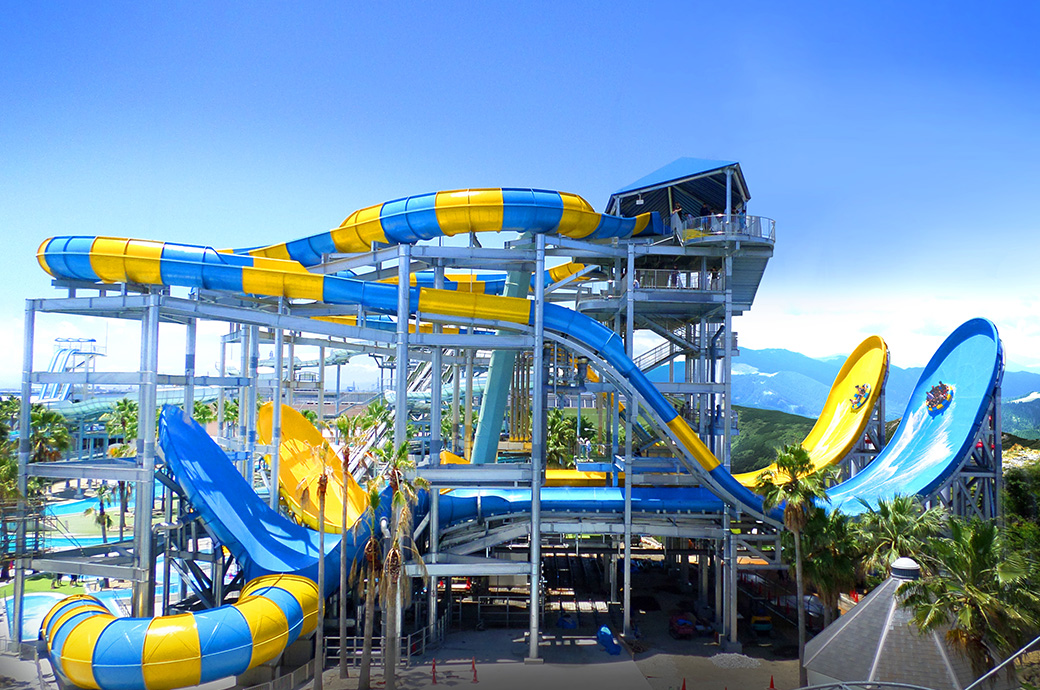Here’s part two of our conversation with David Bromilow, Director, Park and Attractions, Mobaro to get his perspective on the importance of safety and maintenance for parks. Excerpts from the discussion on pitfalls to avoid and the value of preventative maintenance for parks:
Q. What are the common mistakes that you see water parks making when it comes to maintenance?
A. A common mistake with water park attraction inspection programs is ignoring the surfaces. Now when I say surfaces you automatically assume, I was talking about slide surfaces and joints, but this includes the entrance of the water park / attraction to stepping out of the slide or pool area. Guests are most of the time wet, often barefoot, and of course very excited to be at your water park, therefore not always alert to changing underfoot conditions and elevations. You need to focus on all the surfaces including the pathways and walkways, facilities – bathrooms and changing areas, tower steps and platforms. slide step in trays / platforms, slide surfaces and joints, pool steps, etc. To manage slip / fall hazards, most of the surfaces mentioned above will have some form of non-skid treatment, this could be within the surface of the fiberglass or an addition such as grip tape or treated surfaces. As with slide joints and surfaces, these other treated surfaces need to be on a schedule’s inspection and maintenance regime. A poorly maintained non-skid treated surface can and often will be viewed as a bigger exposure than having no treatment at all.
Let’s not forget our plant rooms! To ensure the water quality meets your standards and water distribution is maintained, you have to look after the water management plant and indeed the plant rooms themselves. Plant rooms can often be seen as confined spaces, so keep this in mind when conducting your safety risk assessments of these areas.
Other typical problematic areas are adequate ventilation, chemical storage and general access. Always keep the safety and welfare of the technicians working in these environments at the forefront of your plant room management procedures. Water park attractions and wet rides have over the years changed significantly from small concrete or fiberglass tubes into an open splash pool to complex systems incorporating mechanical conveyor and launch set ups and electrical control systems. These systems all require a degree of routine and schedule maintenance and inspection such as a lubrication schedule on the roller bearings for a conveyor drive system.

Q. How about the maintenance of the structural elements? What can you do for that?
A. Support structures whether it be for the slide / chute section or the tower and stairs must fall into you scheduled inspection and checklists program. When conducting visual inspection of high structure fasteners, a top tip is to apply a small amount of torque stripe to the nuts and threads. This will provide you a clear visual indicator that fastener has become loose or has moved (nut rotation). Remember, all support structures are impacted by some form of dynamics including a simple towers structure. You only need to consider wind forces acting on the structures. Another consideration for attraction support structures is the over ambition of the landscaping teams when applying ground cover on and around the support structure anchor base plates and anchor bolts. These areas must be kept clear to permit periodic inspection processes. Ground coverings such as wood chip and turf will also retain moisture in the areas and promote accelerated corrosion of the base plates, supports and anchors.
Q. What role does daily maintenance play in the overall maintenance schedule and plan?
A. Daily maintenance and checks form the very backbone and starting point of your overall planned preventative maintenance and safety program. Proactive maintenance such a comprehensive daily check program will ensure your equipment is maintained to the highest standards. Daily maintenance ensures you stay in close contact with the equipment and you will pick up on any changes in performance of the attraction systems. Safety checks should always be blended into your maintenance checks, think about the impact of a missing safety and instructional signs or a loose handrail or a bad slide joint or missing inlet cover. These items would be picked up on the daily maintenance and safety check program and any one of them could happen during a single day’s operation.
Q. What do you think is the mantra for water park maintenance?
A. Preventative maintenance is the best assurance of safety, performance, and extended equipment life. So, keep it in mind always.
